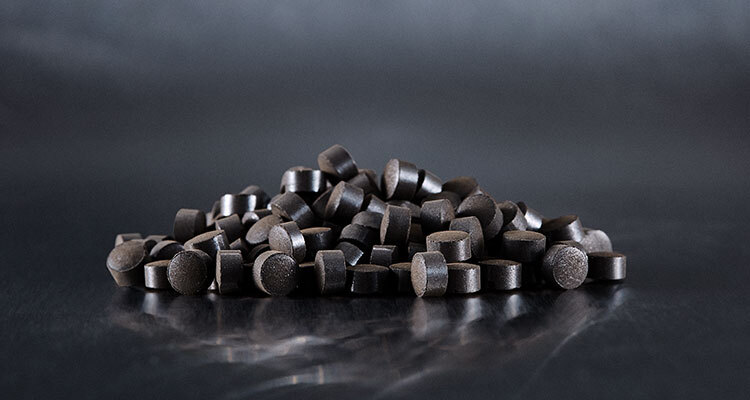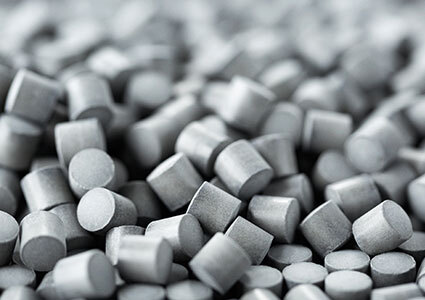
Topsoe drives decarbonization through relentless research
As the world undergoes a significant energy transition, the need for innovative solutions to decarbonize industries becomes increasingly crucial. This is where Topsoe A/S, as a leader in the development of cutting-edge decarbonized process technology, steps in. For decades, the Danish trailblazer has been disrupting the status quo by pioneering catalyst and process technologies to support the global energy transition. The company’s unwavering commitment to research and development has enabled it to provide leading solutions that address the challenges of reducing carbon emissions across various industries. Whether developing cutting-edge methods for greener manufacturing or empowering entirely carbon-neutral sectors through unparalleled investments in research and development, Topsoe remains determined to light the path forward. Henrik Rasmussen, Managing Director for the Americas, discusses the organization’s involvement in the production of blue fuels.
“Blue fuels refer to technology that utilizes proven methods for producing hydrogen and ammonia, with natural gas as the primary feedstock. Natural gas is abundantly available and cost-effective, especially in the US. To achieve the ‘blue’ designation, the production of ammonia and hydrogen incorporates carbon capture and underground storage (CCUS) techniques. With today’s advanced technology, we can use large-scale plants that can capture and sequester over 99 percent of the CO2 emissions (Scope 1) associated with natural gas. This effectively allows the plant to operate in a carbon-neutral manner. However, for these fuels to be truly blue, we must also account for Scope 2 emissions – leaks that can occur as the natural gas is transported via pipeline to the plant. Some wellheads may experience methane leakage, contributing to emissions. To address this, we advocate that clients engage in blue hydrogen and ammonia production work with their natural gas suppliers to certify the well and implement measures to minimize emissions.
 “We have a valuable partnership with Fidelis H2, which brings additional technology to the table, specifically designed to reduce carbon intensity beyond the plant’s core processes. The Topsoe-licensed plant itself, known as Inside the Battery Limit (ISBL), represents the heart of the operation. It encompasses the essential components and processes. On the other hand, Outside the Battery Limit (OSBL) refers to the peripheral elements such as cooling towers, wastewater systems, control rooms, and other ancillary equipment we need to run the plant. By implementing Fidelis H2 technology within the OSBL, we can effectively lower the carbon intensity score for both the ISBL and the OSBL, and thus offsetting the Scope 2 emissions originating from the wellhead. By doing so, we are able to produce ammonia and hydrogen that are carbon neutral,” he enlightens.
“We have a valuable partnership with Fidelis H2, which brings additional technology to the table, specifically designed to reduce carbon intensity beyond the plant’s core processes. The Topsoe-licensed plant itself, known as Inside the Battery Limit (ISBL), represents the heart of the operation. It encompasses the essential components and processes. On the other hand, Outside the Battery Limit (OSBL) refers to the peripheral elements such as cooling towers, wastewater systems, control rooms, and other ancillary equipment we need to run the plant. By implementing Fidelis H2 technology within the OSBL, we can effectively lower the carbon intensity score for both the ISBL and the OSBL, and thus offsetting the Scope 2 emissions originating from the wellhead. By doing so, we are able to produce ammonia and hydrogen that are carbon neutral,” he enlightens.
Blue Wave
Henrik discusses the impact of the recently enacted Inflation Reduction Act (IRA) on the industry and on Topsoe’s business. This legislation is part of the US government’s climate package which aims to encourage everyone to produce blue or green fuels. “The introduction of the IRA has resulted in a significant influx of projects from around the world to the US. The IRA is a game-changer for global companies looking to build and operate blue and green plants in the US. The incentives made available in the IRA has sparked immense interest and enabled us to license numerous plants in the past eight-to-ten months. In other words, the IRA has vastly increased interest in blue fuel which will significantly drive down greenhouse gas emissions,” he emphasizes.
This government-backed development has driven significant growth for Topsoe. However, Henrik’s ambition goes beyond current achievements, as he shares his vision for further development. “I believe that blue ammonia will become the new liquefied natural gas (LNG) in the market. Currently, the US has numerous LNG terminals located along its coastlines, serving as points of export. These terminals facilitate the transportation of LNG to various destinations worldwide, ensuring the continuous flow of energy resources to support global operations. Many countries rely on importing natural gas because it is not readily available domestically. However, I think that blue hydrogen and blue ammonia will be taking a larger share in the marketplace because they are decarbonized. Thus, I expect the US to build hundreds of blue plants over the next ten years, but there are limitations to the rate of construction. “Indeed, managing large-scale projects worth billions of dollars in the chemical industry requires specific expertise and resources, such as large engineering, procure, and construction (EPC) companies and skilled workers, of which many more will be needed than currently available. As previously mentioned, there will be a need to construct hundreds of large blue plants within the next 20 years. However, it is important to acknowledge the challenges of simultaneous construction. While licensing 100 plants is feasible for Topsoe, the EPC industry will not have the capacity to construct all of them at the same time. Realistically, we may only be able to build ten-to-15 plants simultaneously. Consequently, to meet the demand effectively, there would need to be a staggered approach to construction, allowing for the gradual and manageable implementation of these projects.
“Our goal is to advocate for the energy transition while recognizing the continued importance of fossil fuels in our daily lives. Most of the products we use, from clothing to electronics to medicines, are derived from fossil fuels. While green alternatives can substitute them, it will take time to transition fully. We are ready to do our part step by step and are expanding our workforce to meet the rising demand. Fortunately, the demand curve is steep but manageable, allowing us to maintain control over the resources at our disposal and meet the demand,” he adds.
Promising approach
As his finishing thought, Henrik shares his opinion on businesses predominantly focused on the fossil fuel sector who may be skeptical about the energy transition. “It is important to recognize that the energy transition is neither a competition nor a binary choice between green or fossil. A diversified energy mix is essential as we move forward. As a global community we are heavy consumers of energy, and we cannot ignore the integral role of the fossil fuel industry in our lives today. However, the use of blue H2 in the production of fossil fuels will significantly reduce the carbon footprint of the fossil fuels. To further reduce the carbon footprint of fossil fuels a promising approach is direct air capture (DAC), which involves extracting CO2 directly from the air and then sequestrating it or using it for fuel production. By offsetting fossil fuel emissions with the use of blue H2 and CO2 extraction, we can maintain current CO2 levels while supporting developing countries who are forced to rely solely on fossil fuels. While this is not a green solution per se, it fits into the circular economy agenda as we transition to more blue and green fuels over the year to come,” he ends.
Through perseverance and partnership, Topsoe is poised to realize its expansive vision of global decarbonization through accessible blue fuels production today and green solutions in the long run.